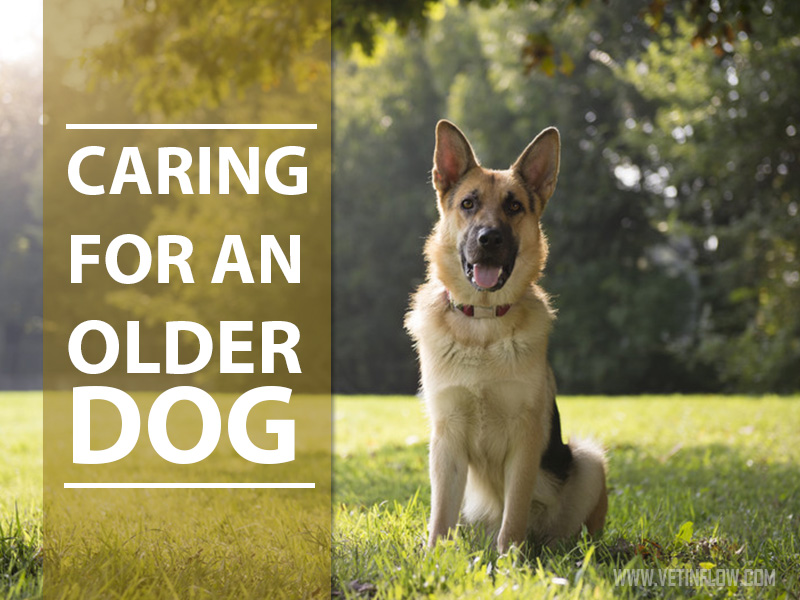
Caring for an older dog

As our beloved dogs get into their golden years, they go through several physical and behaviour changes.
Age alone does not define a dog as being old or geriatric as aging is a process influenced by genetics and lifestyle. A dog's size has an enormous influence in its rate of ageing. In general, when considering small and medium size breeds, dogs are considered old (senior) between 11 and 12 years and are considered geriatric when they are more than 15 years old. Large and giant breeds are considered old by the age of 7 to 10 years and a giant breed dog would be considered geriatric at 11 to 12 years.
As dogs get older they will become less active, sleep more and interact less with their surrounding environment. As a result they often put on weight.Owners may also notice their pet shows some degree of sight and hearing loss.
Their appearance changes as well as their haircoat loses shine, their skin becomes less elastic and white hairs may start to appear.
These changes will occur gradually over time and owners should be suspicious if they notice significant changes over weeks to a few months, particularly if one area is affected significantly more than others. This could suggest that there is disease involved instead of the normal ageing process. Older dogs showing sudden weight loss, marked behavioural changes, increased water intake or reduction in activity should be seen by a vet as soon as possible.
Older dogs are more prone to disease such as arthritis, a chronic and painful condition that limits their movements; dental disease; renal problems and they often present a reduced cognitive function. Some dogs may present gradual weight loss due to poor digestion.
There is much owners can do to keep their senior dog comfortable, happy and healthy. Provide a soft, warm, comfortable bed and make sure food, water and resting spots are easily accessible. Raising food bowls off the ground will bring relief to dogs with stiff and aching joints as they won't be forced to reach down to the floor when feeding.
Try to keep a daily routine for meals, walks and bedtimes. If possible, keep your dog's bed, food and water bowls in the same place over time.
Grooming will be necessary to keep their hair coat in good condition and it is recommended to pay special attention to their nails. The nails of less active dogs can easily become too long, curl around and grow into their pads.
It is very important for owners to control their dog's weight and have an adequate exercise plan. This will not only prevent stiffness and loss of muscle mass but it will also alleviate arthritis symptoms. Older dogs still need to exercise, they just need to do it on a slower pace, without pushing their limits. It is best if their walks are shorter and frequent (two to three times a day).
Keep an eye on any lumps or growths. These are typical of older dogs and although some may be nothing to worry about, unfortunately, others may be cancerous.
Senior dogs should go to the vet twice a year. Regular health checks are very important to pick up on any problems as early as possible and are also a great opportunity to get some good advice from your vet regarding your dog's diet, exercise and general health.
Have you seen our course on care of the ageing dog? This course will teach you about your dog's natural ageing process and how to maintain his/her quality of life for as long as possible. Have a look at it here!
Would you like to know more about dogs? Check our Canine Courses:
Canine courses
Read the previous article: A tasty treat for my horse

